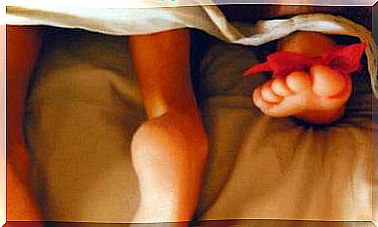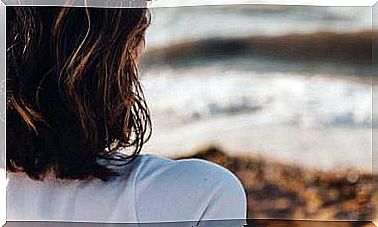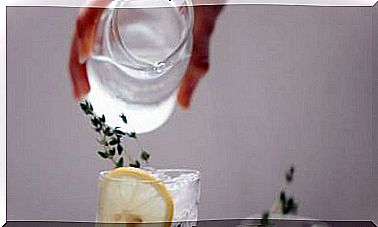How To Breathe Better To Live More Relaxed
Correct breathing prevents psychological problems such as anxiety, and helps us achieve greater well-being. Conscious breathing step by step

Easy to learn, without adverse or undesirable consequences and of maximum real effectiveness. Conscious breathing has broad benefits for the overall health of people. For example, lower anxiety levels.
Breathing correctly leads us to well-being
You were born with an inspiration, you will die with an exhalation. Meanwhile, your existence is a constant succession of breaths at a normal rate of between sixteen and eighteen cycles per minute. The quality of your life is closely related to the quality of your own breath.
In the East, yogis, Tibetan lamas, Taoists and so many others have studied and used the breath as a healing instrument, even as a technique for spiritual elevation.
Thousands of years ago, the ancient inhabitants of what we now call China taught healing and evolution arts based on the mastery of chi, vital energy, a concept synonymous with the prana of the peoples of India, the ki in Japan, the pneuma of The ancient Greeks…
In the energetic anatomy and physiology that acupuncture continues to transmit today, the “lung” system is considered the “master of chi”.
Proven benefits from neuroscience
Nowadays, and from the West, neuroscience seems to corroborate the wide benefits of conscious breathing for the integral health of people. Respiratory management and control has been used, among others, as one of the most effective means for managing emotions.
Psychotherapists belonging to an immense range of schools and methods use it as a suitable tool to help patients in their healing process.
When I speak the magic word breath in my lectures , I can clearly appreciate how most of the people who are listening to me experience an obvious physiological change: I see that their thorax begins to move! Yes that’s how it is. It is enough to remember the breath, consider it or think about it so that it is modified and amplified.
Conscious breathing
On the other hand, as a transpersonal and holistic therapist, I have verified that, regardless of the complexity or the pathology, when leading patients to gently listen to their own breathing, a psychological-energetic change appears : in general, they enter a more conducive state and receptive to healing and balance.
I have no doubt: the healthy use of breathing is the method that offers the most therapeutic profitability. I like to qualify it as the one with the highest SIE index (Simple, Safe, Effective), that is, easy to learn, without adverse or undesirable consequences and of maximum real effectiveness.
The fact that just mentioning the word respiration is amplified is an indicator of something: we tend to breathe poorly, or what is the same, little and badly. And, of course, this is not on a whim, but a consequence of physical and mental stress.
Prevention of a good number of pathologies
Paradoxically, the number one tool to better manage stress, guess what it is? That’s right, just conscious breathing. This is a cheap, simple, affordable, pleasant and restorative method, in addition to having no adverse effects. With a few minutes of conscious breathing, self-recovery is achieved or, what amounts to the same thing:
- Eliminate tension to feel much better.
- Regain position and perspective for a change in attitude.
- Being able to face situations with more energy and joy.
As human beings we are aware of a body and a mind, but most of life we are immersed in our feelings. When we ask someone, or ourselves with sincere interest, “How are you?” We are not referring to the pain of the bones or the state of the body or what goes through our mind, but to something more essential: how we really feel.
Because regardless of what happens to the body, external events, the direction or purposes of the mind, feelings and emotions are the very essence of human life. In other words, it is not what we have or what happens but how we live it that makes the difference in everything.
There are many ways of living the same reality, and the difference is in our way of feeling it and in the emotions present. Perhaps because of all this, ancient Eastern and Western pre-industrial cultures discovered the relationship between emotional states and changes in the rhythm and quality of breathing.
Emotions involved in the quality of breathing
At the hormonal level, each emotional state – sadness, anxiety, fear, anger … – corresponds to a different biochemistry, as well as a different expression in the shape and rhythm of breathing. But the extraordinary thing about all this is that the “Emotions-Breathing” highway has two-way traffic:
Not only do emotions alter and modify breathing, but, in turn, a specific form of breathing can change an emotional state
This opens a very interesting chapter in what we could call emotional alchemy, a conscious way of learning to manage and change moods and promote a higher quality of life.
Let us illustrate in more detail with a common example: anxiety, which is the evil of our times, at least in so-called developed countries. Most of the “classic” therapists – psychologists, psychiatrists and even the family doctor himself – see countless diseases and symptoms associated with a life with a high level of anxiety on a daily basis.
A recent study carried out in the United States found that more than 40% of the people who attended primary care consultations did so with problems that reflected high levels of anxiety, regardless of their physical symptoms.
Anxiety
So what is anxiety? To summarize: it is an alteration in the levels of cortisol and adrenaline in the system, which causes that, in a certain way, the basal metabolism is unbalanced. It is observed when the person is tense, cannot relax, presents / displays insomnia, digestive disorders, is hyperalert and with constant concern, among many other symptoms, which in turn produces a very varied picture of common pathologies of intensity medium to severe.
In these cases, breathing is extremely shallow, in the upper or clavicular area, and only works at 10% of lung capacity. Put simply and quickly, the person is “drowned” by his own anxiety and lack of deep breathing. You literally need a break!
And how is healing done? Breathing. Our brain may be completely overwhelmed by worries, tensions, obligations and fears, but basically it is asking for oxygen and with it chi, which is the bioelectric potential of the air.
Drowned out by routine
One of the symptoms that we are at a certain level of anxiety is the use of the expression “not having time for anything” … Not even to breathe! However, if you decide to break the spell and give yourself a little time, I invite you to take a walk on the beach, in a forest or in a park near your residence … Walk and, while you do it, observe calmly your breathing, the entrance and the exit of the air; don’t try to force anything.
If you continue with this practice of “breathing walk”, you will begin to experience great changes that will come to you in a subtle but increasingly evident way. The first thing that happens is that when you offer the brain fresh air (that’s why it would be wonderful to do it in the sea, a forest or a wooded area), it begins to think differently.
You can’t expect a decentered brain to offer you focused solutions, so whatever happens in your life has a solution, but the first step is that you need to oxygenate and energize your own brain.
In general, the positive and obvious changes come after twenty minutes of “walking-breathing”; Then you can add other actions: for example, take off your shoes, touch the earth and green grass with your feet, or the sand on the beach, lie down for a while and continue observing your breath, without the intention of changing anything …
Keys to improve your breathing
I would like you to feel for a while that your breath is the voice of your inner physician or, if you prefer, your inner guide and teacher. Don’t tell the breath how it has to breathe, just listen, receptive, like an apprentice to his teacher, like a patient to his therapist: let yourself be guided and healed by natural breathing.
In general, there are two reasons why natural breathing is limited and blocked during anxiety: one is the attention of the mind, which is usually directed to stressful thoughts, with images that give us fear or distress, such as ending something in a deadline or a threat; the second is that the respiratory musculature is constricted, tense, and closed due to these mental patterns.
Breathing simply and naturally, giving yourself a few minutes in a suitable environment, achieves:
- Shift your attention. First, you will shift focus for a while and focus on your own breath.
- Release tension. Second, simple respiratory awareness begins to dissolve the muscle tension patterns that constrain the act of breathing. You just have to give yourself a few minutes.
Taking time for mindful breathing in the same office can help very busy people who don’t have time to find a different environment. If no one is there, try taking off your shoes and loosening your belt and clothing, take off anything that squeezes your wrists and hands … and indulge in the enjoyment of simply breathing. In ten minutes the anxiety will be cut in half. And if you go on for ten more minutes, the result can be spectacular.
Anyway, the most important thing is that if by reading this article you have discovered the power of breathing, try not to forget it, but to include it in your daily routine, to integrate it into your own life. You will soon realize that, sometimes, “losing” a little time is gaining it later in effectiveness, health and well-being.
Since many years ago I integrated this learning into my life, I have learned to take my “breaths”, my moments, so that life can once again be in all its colors. We all know the reflex action of taking a pill to try to solve a thousand different things … and we do it despite knowing the possible side effects. Applying conscious breathing is more exciting because, even if it takes you a few minutes, you will have the enormous satisfaction of being able to improve yourself and, best of all, without subsequent negative effects … Get excited, breathe, live with joy, with oxygen and with vitality; your brain will show you a world with many more options and possibilities. Good practice!
Practicing them daily, these exercises will provide you with serenity, relaxation and balance. Choose a quiet place where you cannot be interrupted and spend ten minutes feeling your body breathe.
Balance polarity
The air we breathe, apart from having chemical elements such as oxygen or nitrogen, carries electrical energy, positive and negative ions. Ionic balance is essential for physical and psychological balance.
Through the right nostril we capture the positive ions, while through the left nostril we capture the negative ions. Although negative ions are, despite the name, the most useful for the body, we need to have a balance between the two. One of the functions of these good ions, the “negative” ones, is to facilitate the absorption of oxygen molecules in the pulmonary alveoli.
- Practice alternating breathing. It is so called because you change nostril by inhaling on one side and exhaling on the other, keeping the opposite covered.
- Sit with your back straight, preferably not supported. First relax a little: feel the posture and immobility.
- Cover the right nostril with the thumb of the right hand. Take a slow breath with just your left nostril.
- Next, expel the air through the right nostril, covering the left nostril.
- Inhale through the right, covering the left, cover both nostrils for a moment and gently exhale through the left.
- Cover the two nostrils again, then take a breath from the left, cover it, and exhale from the right.
- The optimal duration of this exercise is about ten minutes, although you can start practicing with five. Do it once a day, in an environment neither cold nor hot, but well ventilated, if possible with a green area nearby.
- Practice will bring you to a state of great serenity and balance. In the yogic tradition it is called Nadi Shodhana, which means purification of the nadis, or subtle channels. Good practice!
Calm our mind
One of the most effective breathing exercises to calm the mind and achieve deep relaxation is based on establishing a specific rhythm. This traditional method is thousands of years old and is based on something as simple as the natural rhythm that breathing takes when we are relaxed and at the same time centered.
In this case, what we do is consciously use the proper breathing rhythm and wait for peace and calm to be present, which happens after practicing between ten and fifteen minutes.
- Find a quiet place, with a suitable and ventilated temperature. Sit with your back straight and preferably not leaning on anything. A good option may be the edge of a chair or a traditional yoga posture, such as the half lotus.
- Take a breath through your nose, mentally counting to four. You have to count slowly: one, two, three, four … until you complete an unforced breath.
- Then count to two while holding your breath and begin to breathe out very slowly for a count of six. At the end of the exhalation, we do not retain, but we inhale again for a count of four.
- In this way we have established a 4-2-6 rhythm. We only hold the air two seconds after inspiration to full. And exhalation is two points longer than inspiration.
- Maintain your breathing rate for about ten minutes. After this time you will feel very good, refreshed and serene.
- With practice, you can extend the exercise by lengthening the exhale up to eight. In this way, there would be four breathing in, two holding back and eight breathing out. That is, the exhalation lasts twice as long as the inhalation. However, I recommend that you first do the initial practice with the 4-2-6 rhythm for a month and later go to 4-2-8.
- This exercise can be a preparation for meditation or a practice to achieve balance and serenity in your life. I encourage you to give it a try. Good practice!








